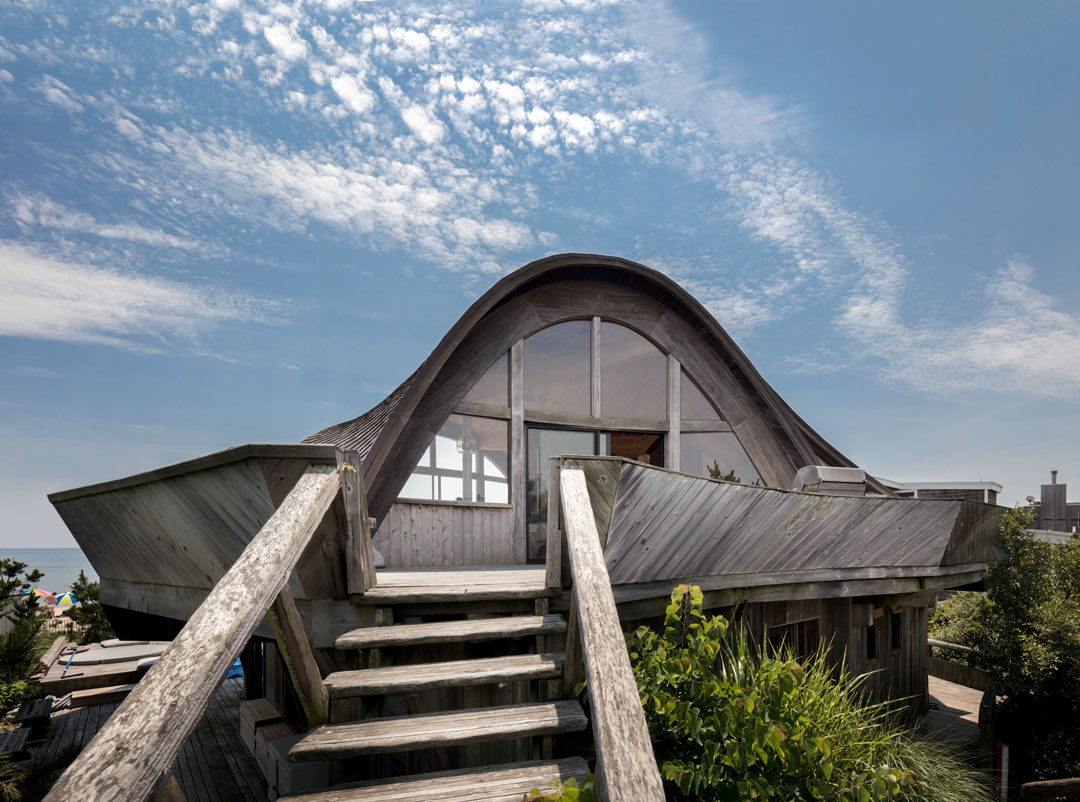
Want Modernism beside the sea? Go to Fire Island!
This summer resort is home to some of America’s best mid-century architecture, as our new guide explains
You can find beautiful 20th century beach houses right across America’s shoreline, but there’s one stretch of Atlantic architecture that truly stands out, and it's only a short ferry ride from Long Island.
“Fans of Mid-Century architecture should visit Fire Island Pines, a predominantly gay section of Fire Island with a denser assortment of Modernist beach houses than anywhere in the world,” writes Sam Lubell in his new book Mid-Century Modern Architecture Travel Guide: East Coast USA.
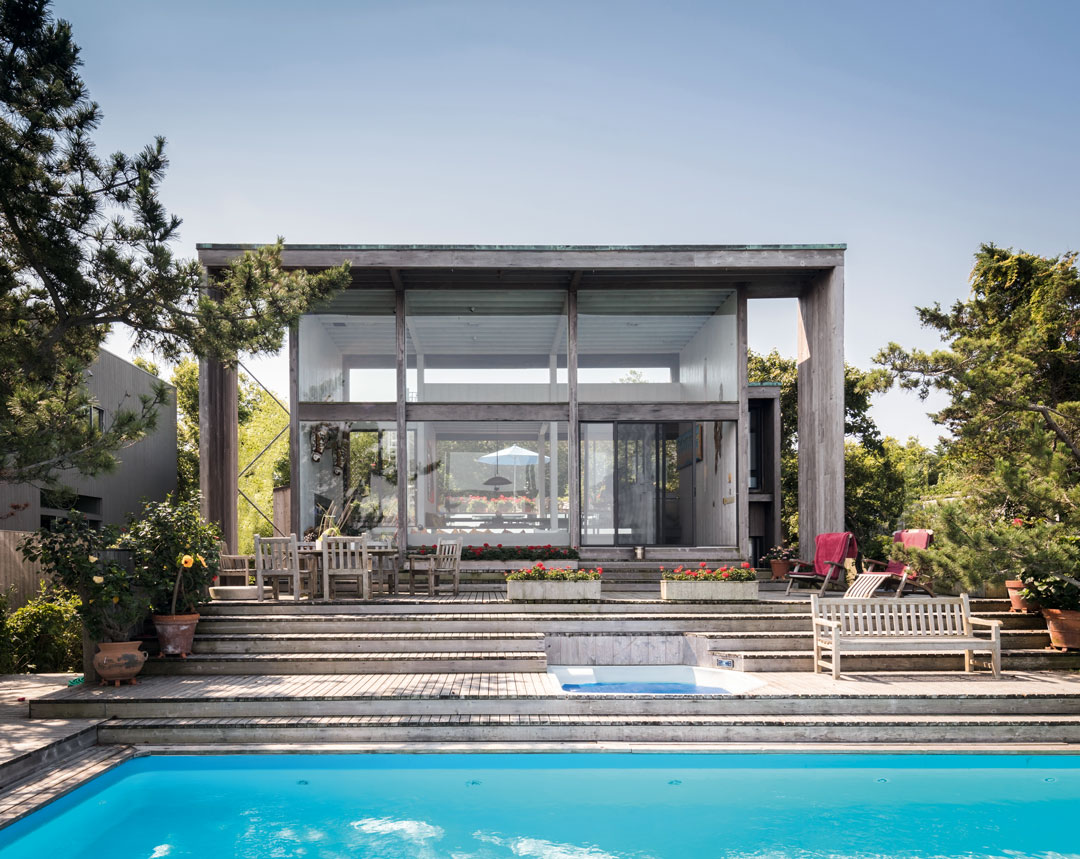
“The soul of Fire Island’s Modernist movement was Horace Gifford,” writes Lubell, “designer of over seventy beachside homes, who died too young of AIDS. Gifford took the timber-focused material palette and attunement to the ocean of traditional beach houses and merged it with an exuberant, hedonistic, improvisational form of Modernism that resulted in a highly original body of work.” 252 Bay Walk (above) is one of Gifford’s classics, though there are plenty of wonderful other beach houses by other architects.
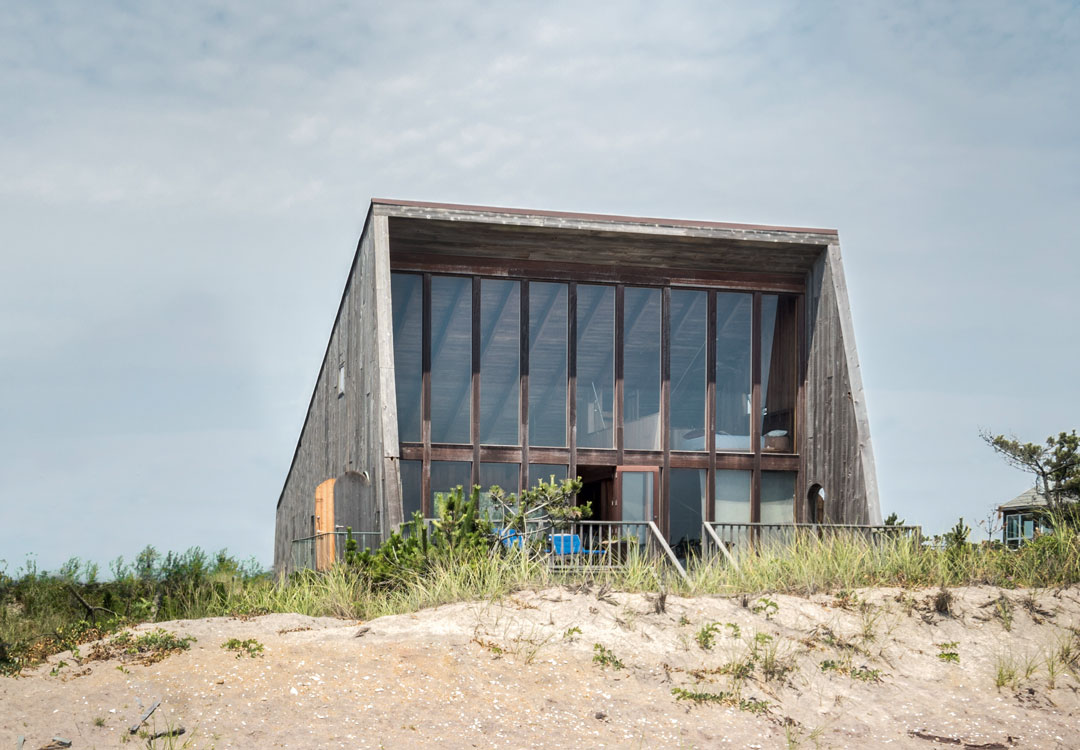
“Known on Fire Island as the 'TV House' for a silhouette that matches a 1980s-era big screen, 142 Ocean Walk was built by its creative owners, set designer Edwin Wittstein and art director Robert Miller,” writes Lubell. “The two had hired Horace Gifford for past projects, and their decision to go it alone led to some tension with their old friend. The building, which juts up steeply from Ocean Walk toward the sea itself, opens up a double-height space with a lofted bedroom that offers dramatic views through a large, wood-framed window wall onto the ocean, and leading out to a partially enclosed sundeck.”
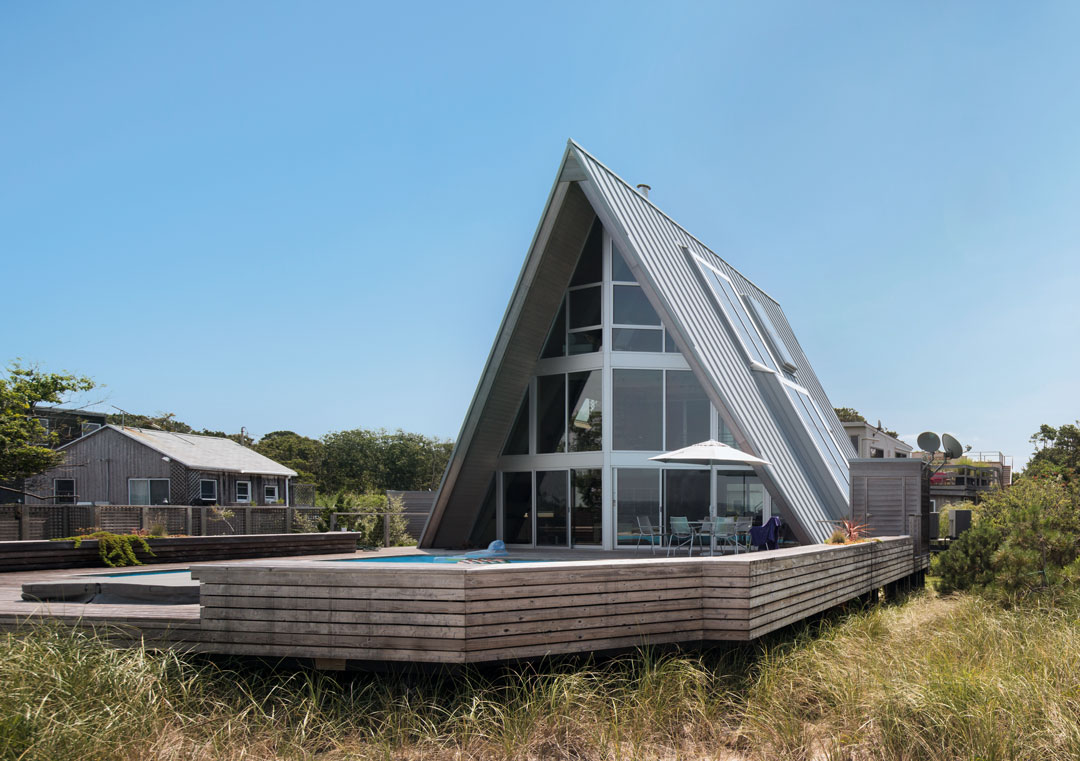
“The area’s most famed pointy roof is 601 Tuna Walk," writes Lubell, “originally built by owners Vera and Paul Weidenhoffer as a rustic bayside summerhouse. The north-facing building, installed with a shingled roof, grid of inset windows, and spiral staircase connecting an open living space with two cramped sleeping floors, later became a rental, and, quickly, a popular party house. It stayed that way until Doug Harris and Bill Van Parys bought it in 2011, hiring Bromley Caldari architects for an overdue renovation.”
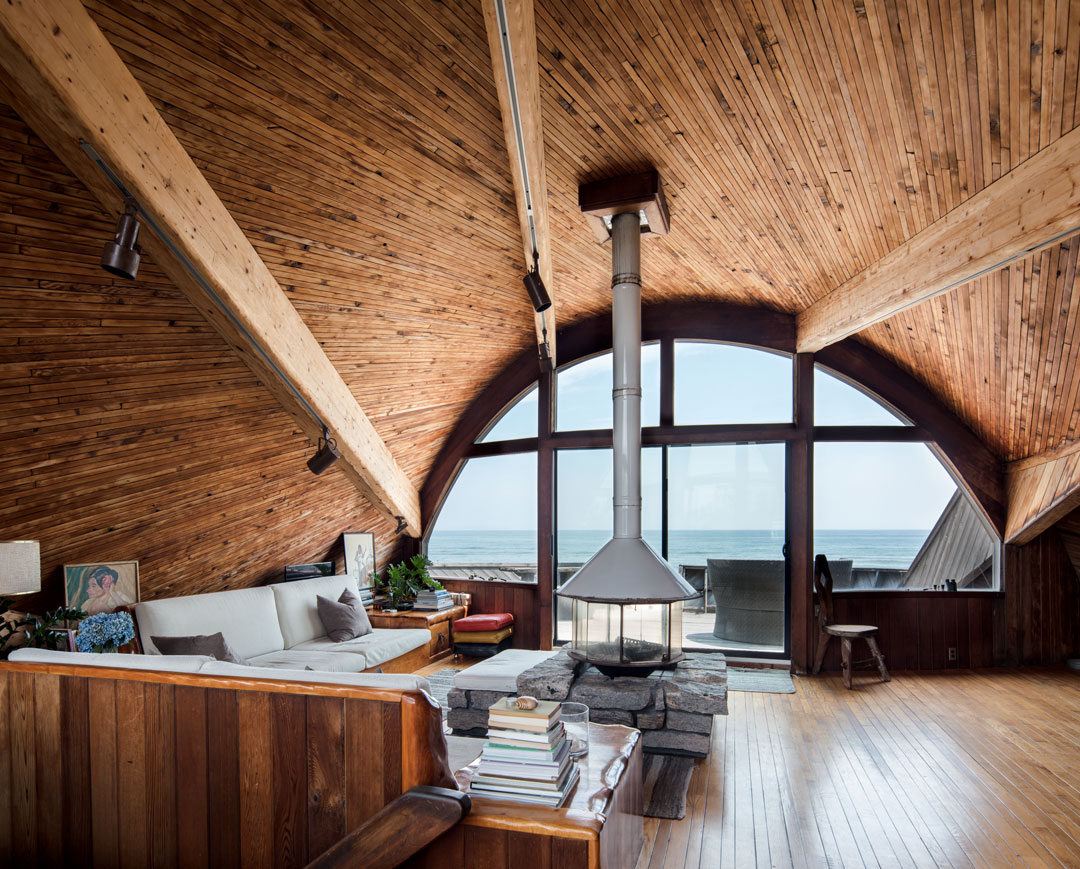
Not everyone used construction professionals though, as Lubell explains. “Just a couple minutes’ walk from the Fire Island Pines ferry terminal sits the Pines’ best example of Organic Modernism: 4 Ocean Walk, designed and built by architect Peter Asher. The timber structure, its shingled, parabolic roof twisting like a saddle a few feet from the island’s southern-facing beach, is a marvel of wood construction, employing every type imaginable: cedar, pine, hemlock, Douglas fir, and so on. The result is space-age, but also textured and cozy, the top floor containing open, sinuous spaces for living and dining, its lower levels, connected by a vertebrae-shaped mahogany stair, containing a den and bedrooms.
“Asher, a furniture maker and carpenter as well as an architect, was inspired by the curvilinear forms of Mexican architect and engineer Felix Candela, and decided to re-create them with wood beams and boards. The abode, which he built himself (with the help of local high schoolers), preserves views of the beach and neighborhood, while maintaining privacy from buildings on either side.”

To find out more about these houses and plenty more besides, and to see many more photographs by Lubell’s co-author, Darren Bradley, order a copy of their Mid-Century Modern Architecture Travel Guide: East Coast USA, here.